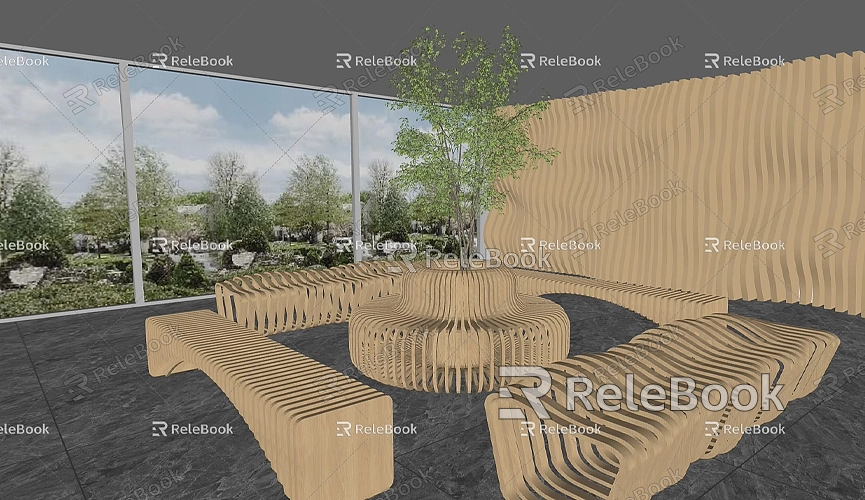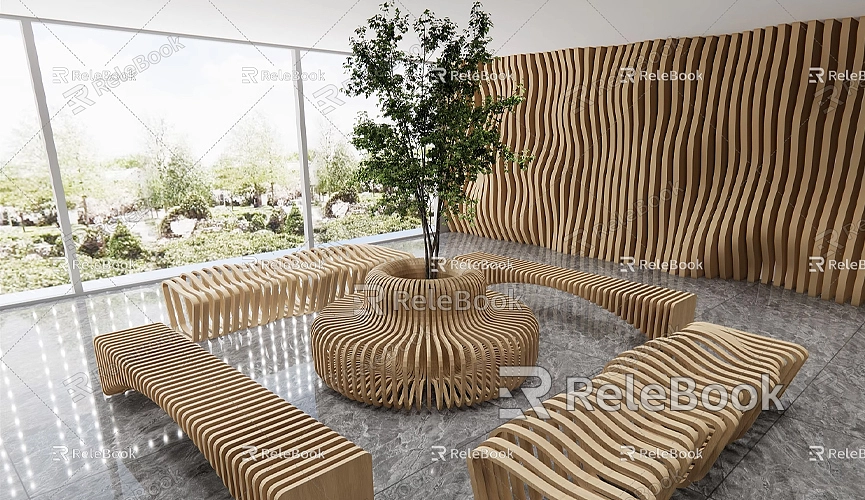How to Model Furniture in SketchUp
Modeling furniture in SketchUp not only helps you quickly design your ideal furniture pieces, but also allows you to effectively showcase your designs, particularly in the fields of interior design and product design. This article will guide you through the process of creating furniture models in SketchUp quickly and accurately, sharing practical tips to improve your modeling efficiency.
Choose the Right Design Reference
Before modeling, you need to clarify the design direction of the furniture, such as whether you’re aiming for a modern sofa or a minimalist desk. Referring to real-world furniture images or design sketches can make the modeling process smoother. It's crucial to determine details like dimensions, shapes, and materials. Consider sketching a simple outline on paper or using 2D design software to define the proportions and positions of various parts.

Additionally, obtaining accurate measurements is key to ensuring your model meets real-world usage needs. You can use the "Tape Measure Tool" in SketchUp to measure different parts of the furniture precisely, ensuring correct dimensions.
Use SketchUp’s Basic Tools
SketchUp is user-friendly and suitable for beginners. Common tools for modeling furniture include the "Rectangle Tool," "Push/Pull Tool," "Arc Tool," and "Offset Tool."
For example, if you’re modeling a table, start by using the "Rectangle Tool" to create the tabletop, then use the "Push/Pull Tool" to stretch it to the desired thickness. Next, draw the legs' outline with the "Line Tool" and extend them to the appropriate height using the "Push/Pull Tool." For more complex parts, such as curves or rounded edges, the "Arc Tool" and "Follow Me" function will be very helpful for achieving detailed shapes.
When drawing furniture, SketchUp allows for precise numerical input, enabling you to enter exact dimensions for controlling the size of each part, which is crucial for detailed furniture modeling.
Utilize Components and Groups
The component and group features in SketchUp are essential for improving modeling efficiency. When modeling furniture, you can create different parts as components or groups. This allows you to modify individual parts without affecting the others.
For instance, you can create the tabletop and legs as separate components, so if you need to adjust the tabletop size, you only need to edit that component without worrying about the leg proportions. Another advantage of components is that the same component can be reused throughout the model; when you modify one instance, all identical components update automatically, making it ideal for repetitive furniture modeling, like chairs.

Add Materials to the Furniture
A vital step in furniture modeling is applying appropriate materials to the model, enhancing realism and showcasing better design effects.
SketchUp comes with basic materials like wood, metal, and fabric that you can apply to your furniture models. However, if you want higher-quality textures, consider using external resources. By downloading high-quality material textures online, you can further enhance the realism of your furniture models. If you need many high-quality 3D textures and HDRI for creating models and virtual scenes, you can download them for free from [Relebook](https://textures.relebook.com/). This will streamline your furniture modeling process and improve visual results.
Additionally, you can use the "Material Editor" to adjust the scale, color, and texture details of materials, making them more representative of the actual furniture.
Optimize Your Furniture Model
When creating complex furniture models in SketchUp, the increasing details can lead to larger file sizes, affecting performance. To avoid this, consider the following optimization strategies:
First, reduce unnecessary details. For instance, if the model is for a distant view, you can omit small details like screws and stitching. Secondly, use SketchUp plugins to optimize the polygon count, reducing unnecessary geometry. Lastly, organize the various parts of the model using layers, allowing for easy management and the ability to hide or show different components during later modifications or presentations.
Export and Showcase Your Furniture Model
After completing your furniture model, you can export it in various file formats for further processing or rendering in other software. SketchUp supports multiple formats, including common 3D file types like .obj and .dwg.
If you want to add more realistic lighting effects, you can import your SketchUp model into rendering software like V-Ray, Lumion, or Unreal Engine, which can help you quickly generate high-quality renderings that showcase the furniture under realistic lighting conditions.
Modeling furniture in SketchUp offers a high degree of freedom, from design concepts to modeling details and material application. Mastering basic tools and features such as the "Rectangle Tool," "Push/Pull Tool," and the component and group functions can help you quickly complete furniture models. Meanwhile, utilizing high-quality textures and optimizing the polygon count can make your furniture models more realistic and smoother to operate.
If you need high-quality 3D textures and HDRI while creating models and virtual scenes, you can download them for free from [Relebook](https://textures.relebook.com/). For exquisite 3D models, visit [Relebook](https://3dmodels.relebook.com/), where you'll find a wealth of premium 3D resources to enhance your modeling efficiency and the quality of your work.

